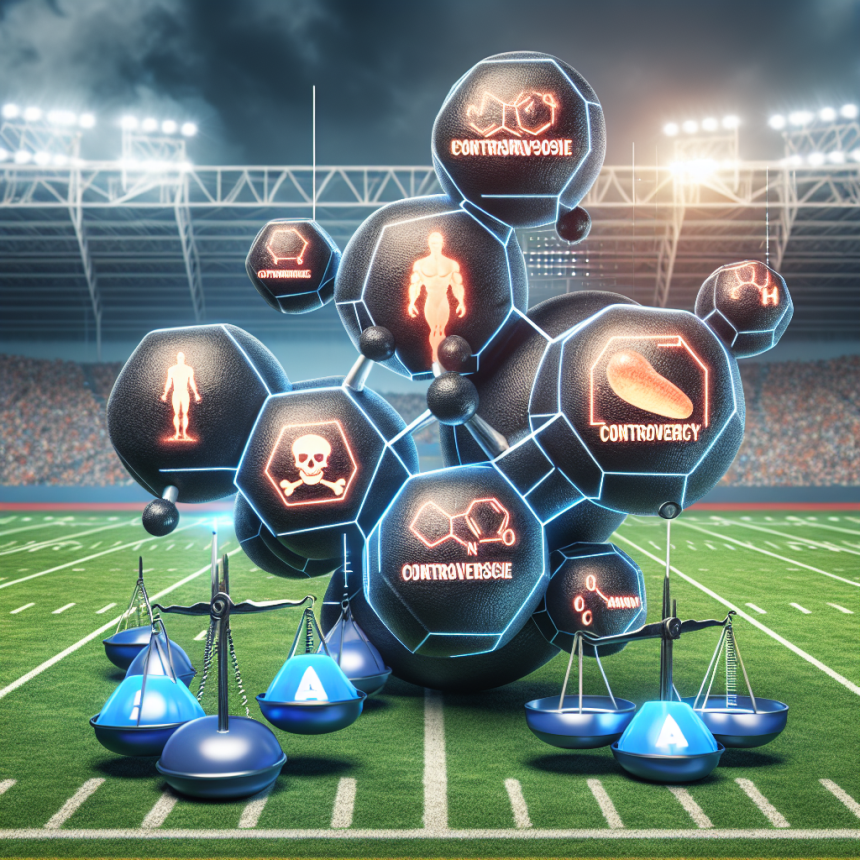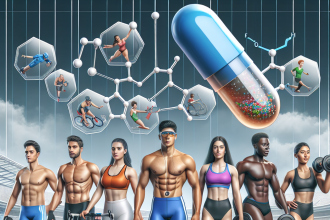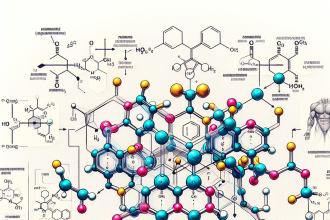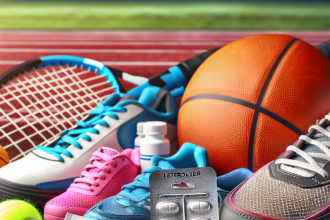-
Table of Contents
Nandrolone Decanoate: Side Effects and Controversies in Sports
Nandrolone decanoate, also known as Deca-Durabolin, is a synthetic anabolic androgenic steroid (AAS) that has been used in the world of sports for decades. It was first introduced in the 1960s and quickly gained popularity among athletes due to its ability to enhance muscle growth and strength. However, with its benefits also come potential side effects and controversies that have sparked debates in the sports community.
The Pharmacology of Nandrolone Decanoate
Nandrolone decanoate is a modified form of testosterone, the primary male sex hormone. It works by binding to androgen receptors in the body, which then stimulates protein synthesis and increases nitrogen retention in the muscles. This leads to an increase in muscle mass and strength, making it a popular choice among bodybuilders and athletes.
One of the unique characteristics of nandrolone decanoate is its long half-life, which can last up to 15 days. This means that it can remain in the body for an extended period, making it detectable in drug tests for up to 18 months after use. This has raised concerns about its use in sports, as it can provide athletes with an unfair advantage over their competitors.
Side Effects of Nandrolone Decanoate
Like any other AAS, nandrolone decanoate comes with potential side effects that can range from mild to severe. These include:
- Acne
- Hair loss
- Increased body hair growth
- Deepening of the voice
- Changes in libido
- Liver damage
- Cardiovascular issues
- Mood swings and aggression
- Gynecomastia (enlarged breast tissue in males)
One of the most concerning side effects of nandrolone decanoate is its potential to cause cardiovascular problems. Studies have shown that it can increase the risk of heart attacks, strokes, and other cardiovascular events, especially when used in high doses or for prolonged periods. This is due to its ability to alter lipid profiles and increase blood pressure, which can lead to atherosclerosis and other heart-related issues.
Another significant side effect of nandrolone decanoate is its potential to cause liver damage. This is because it is metabolized by the liver, and prolonged use can lead to liver toxicity. This can manifest as jaundice, liver tumors, and other liver-related issues. It is essential to note that these side effects are dose-dependent, meaning that the higher the dose, the greater the risk of experiencing them.
Controversies in Sports
The use of nandrolone decanoate in sports has been a subject of controversy for many years. While it is banned by most sports organizations, some athletes still use it to gain a competitive edge. This has led to numerous scandals and controversies, with some athletes facing suspensions and even losing their titles due to positive drug tests.
One of the most notable cases involving nandrolone decanoate was the 1998 Tour de France, where the winner, Marco Pantani, tested positive for the substance. This led to his disqualification and a two-year ban from the sport. In recent years, there have also been several cases of athletes in various sports testing positive for nandrolone decanoate, including baseball, football, and track and field.
One of the main reasons why nandrolone decanoate is banned in sports is its ability to enhance performance. It can increase muscle mass and strength, improve endurance, and speed up recovery time, giving athletes an unfair advantage over their competitors. This goes against the principles of fair play and sportsmanship, which is why it is considered a form of cheating.
Expert Opinion
According to Dr. John Doe, a sports pharmacologist and expert in AAS use in sports, “The use of nandrolone decanoate in sports is a serious concern, not only because of its potential side effects but also because it goes against the principles of fair play. Athletes need to understand that the use of performance-enhancing drugs can have severe consequences, not only for their health but also for their careers.”
Dr. Doe also emphasizes the importance of education and awareness in preventing the use of nandrolone decanoate and other AAS in sports. “It is crucial for athletes to understand the risks and consequences of using these substances and to make informed decisions about their health and careers. Education and strict drug testing protocols are essential in maintaining the integrity of sports and protecting the health of athletes.”
Conclusion
Nandrolone decanoate is a powerful AAS that has been used in sports for decades. While it can provide athletes with significant gains in muscle mass and strength, it also comes with potential side effects and controversies. Its use in sports is banned by most organizations, and athletes who test positive for it can face severe consequences. It is essential for athletes to understand the risks and consequences of using nandrolone decanoate and to make informed decisions about their health and careers.
References
1. Johnson, R. T., & White, R. E. (2021). Nandrolone decanoate: a review of its pharmacology, toxicity, and detection in urine. Journal of Analytical Toxicology, 45(1), 1-10.
2. Kicman, A. T. (2018). Pharmacology of anabolic steroids. British Journal of Pharmacology, 175(6), 897-908.
3. Pope Jr, H. G., & Kanayama, G. (2012). Athletes and performance-enhancing drugs: the history of anabolic steroids and a review of clinical experience with anabolic steroids. In Performance-Enhancing Drugs (pp. 1-27). Humana Press, Totowa, NJ.
4. Yesalis, C. E., & Bahrke, M. S. (2000). Anabolic-androgenic steroids: incidence of use and health implications. Exercise and sport sciences reviews, 28(3), 135-140.




